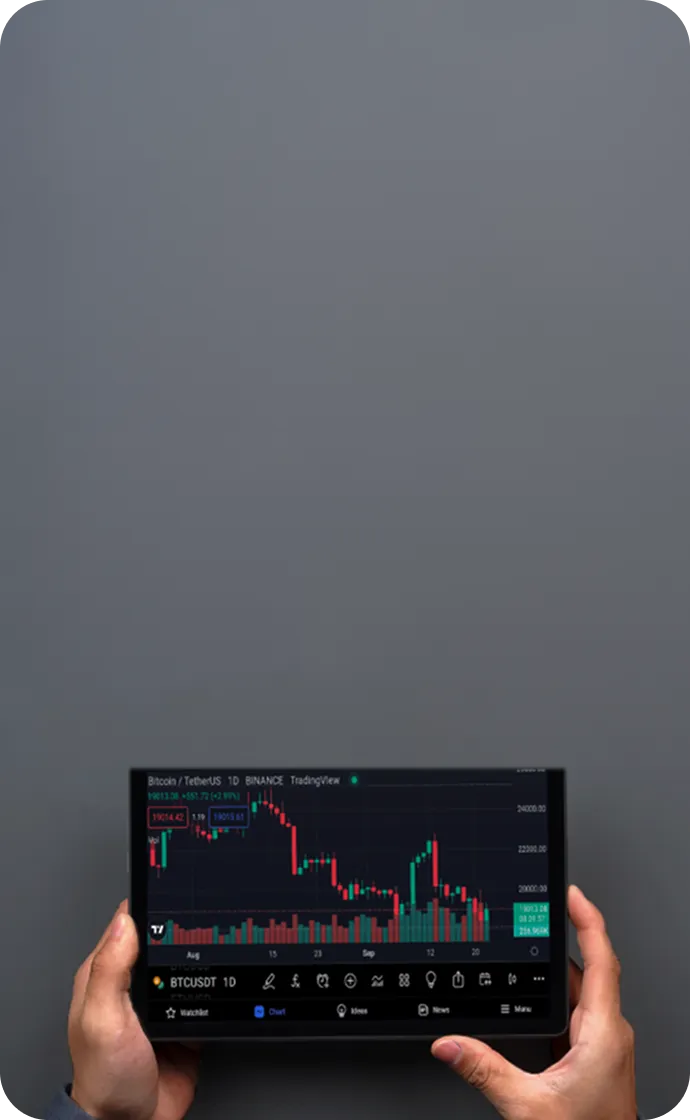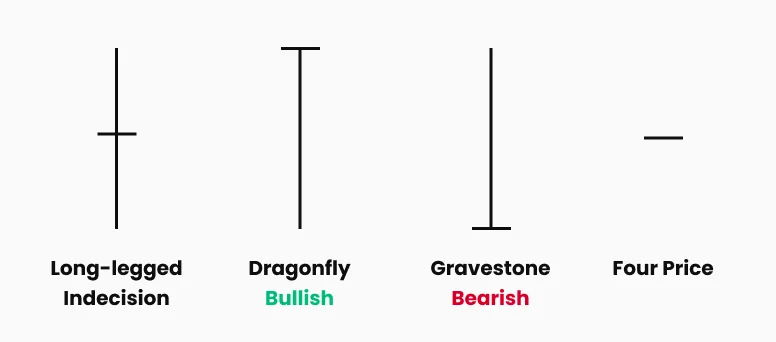

Technical Analysis – A Beginner’s Guide
What is Technical Analysis?
Technical analysis forecasts the likely future price movements of a financial instrument' such as a stock, forex pair, or commodity, based on market data. Unlike fundamental analysis, which evaluates economic indicators, company performance, and sector trends, technical analysis concentrates solely on price action and trading volume.
The foundation of technical analysis is based on three core principles:
- Market Action Discounts Everything: All pertinent information (economic data, company fundamentals, market sentiment) is already incorporated into the price.
- Prices Move in Trends: Once a price trend is established, it is more likely to continue than to reverse.
- History Tends to Repeat Itself: Market patterns observed historically tend to recur, reflecting consistent trader psychology.
Technical traders believe that current and historical price movements provide the most reliable signals for forecasting future price action. By analyzing chart patterns, identifying trends, and applying various technical indicators,
traders can make informed decisions about optimal entry and exit points.
Charting Across Different Time Frames
A primary decision for a technical analyst is selecting the appropriate time frame for analysis. The chosen time frame should correspond with your trading style and objectives:
Common Time Frames for Technical Analysis:
- 5-minute chart: Primarily used for ultra-short-term trading and scalping
- 15-minute chart: Preferred by day traders seeking more context than a 5-minute chart provides
- Hourly chart: Provides a balanced perspective for intraday trading
- 4-hour chart: Favored by swing traders holding positions for several days
- Daily chart: Standard for position traders and longer-term analysis
- Weekly/Monthly charts: Utilized for identifying long-term trends and key support/resistance levels
The selected time frame significantly influences your analysis. Price movements that appear significant on a 15-minute chart may be mere noise on daily or weekly charts. Conversely, critical support levels visible on daily charts may not be apparent in shorter time frames.
To illustrate, the same price action can look very different across time frames. A strong uptrend on a daily chart might show as a pullback or consolidation on a 1-hour chart, offering varying trading signals depending on the time frame analyzed.
Candlestick Charts
Candlestick charting is the most widely used method to visualize price movements. Each candlestick represents price action during a single period for the selected time frame. For example, each candlestick on an hourly chart shows price action for one hour, while on a 4-hour chart, each candlestick represents four hours of price movement.
Candlesticks are "constructed" as follows: The highest point of the candlestick indicates the highest traded price during that period, and the lowest point shows the lowest price. The "body" of the candlestick (the colored red or blue "blocks" or thicker sections) represents the opening and closing prices. A blue candlestick body indicates the closing price (top of the body) was higher than the opening price (bottom of the body); a red body indicates the opening price was higher than the closing price.
Candlestick colors are a matter of preference. Some traders use white and black bodies (the default and most common), others prefer green and red or blue and yellow. Regardless of color choice, they provide a clear visual cue to determine whether the price closed higher or lower in that period. Candlestick charts often make technical analysis easier than standard bar charts, offering more visual patterns and cues.
Candlestick Patterns – Dojis
Candlestick patterns, formed by one or a series of two or three candlesticks, are among the most popular technical indicators for spotting potential market reversals or trend shifts.
Doji candlesticks, for instance, signal market indecision and can indicate an impending trend reversal. A doji’s defining feature is that its opening and closing prices are equal, resulting in a flat candlestick body. The longer the upper and/or lower "shadows" or "tails" (the range from low to high during the period) on a doji, the stronger the signal of indecision and potential reversal.
Several doji variations exist, each with a distinct name:
Figure 1: Variations of Doji Candlesticks
- The standard doji is the long-legged doji, where price extends roughly equally in both directions, opening and closing near the midpoint of the range. This candlestick visually represents market indecision. When appearing after a prolonged uptrend or downtrend, it often signals a potential reversal or trend change.
- Following a sustained downtrend, the dragonfly doji suggests a possible bullish reversal. This pattern shows sellers pushing prices significantly lower (long lower tail), but by period close, price recovers to the high, indicating rejection of the downside pressure.
- The gravestone doji'—named for its resemblance to a tombstone—signals bearish sentiment. It is the inverse of the dragonfly doji, indicating strong rejection of upward price attempts and suggesting a potential downside reversal.
- The rare four-price doji, where the market opens, closes, and trades exclusively at one price throughout the period, epitomizes extreme indecision, showing no directional bias.

Technical Indicators – Moving Averages
Figure 2: Technical Indicators – Moving Averages
Beyond candlestick patterns, technical traders utilize a vast array of technical indicators to support trading decisions.
Moving averages are the most widely used technical indicator. Many strategies incorporate one or more moving averages. A simple moving average strategy could be: "Buy when price stays above the 50-period exponential moving average (EMA); Sell when price falls below the 50 EMA".
Moving average crossovers are another popular indicator. For example, a strategy might be to buy when the 10-period moving average crosses above the 50-period moving average.
Higher-period moving averages carry more significance. For instance, price crossing above or below a 100- or 200-period moving average is typically considered more meaningful than crossing a 5-period moving average.
Technical Indicators – Pivot Points and Fibonacci Levels
Daily pivot points, which also identify multiple support and resistance levels, are widely used to pinpoint price levels for trade entries and exits. Pivot points often mark key support/resistance or range boundaries. Breakouts above or below these levels are interpreted as signals for significant price moves in the breakout direction.
Pivot points and their support/resistance levels are calculated using the previous trading day’s high, low, open, and close prices.
Fibonacci levels are another essential tool in technical analysis. Fibonacci, a 12th-century mathematician, developed ratios that are popular among traders for identifying trade opportunities, entries, and profit targets during trends.
The key Fibonacci ratios are 0.24, 0.38, 0.62, and 0.76, often expressed as percentages (23%, 38%, etc.). These ratios complement each other: 24% is the complement of 76%, and 38% complements 62%.
Many technical indicators automatically calculate and overlay Fibonacci levels on charts.
Fibonacci Retracements
Figure 3: Technical Indicators – Fibonacci Retracements
Fibonacci retracements are the most commonly used Fibonacci tool. After a sustained uptrend or downtrend, prices often retrace partially before resuming the main trend. Fibonacci retracements help identify low-risk entry points during such corrections.
For example, suppose stock "A" rises steadily from $10 to $40, then begins to pull back. Investors look for favorable entry points during this retracement.
Fibonacci levels suggest retracements of approximately 24%, 38%, 62%, or 76% of the original move ($10 to $40). Investors watch these levels for signs of support where prices may resume rising. For instance, a 38% retracement entry would be around $31 ($40 - 38% of $30).
Fibonacci Extensions
Continuing the example, after buying at $31, you might set profit targets using Fibonacci extensions, which project how far the price may rise when the uptrend resumes. Extension levels correspond to 126%, 138%, 162%, and 176% of the original move, calculated from the retracement low. For a 38% retracement low at $31, the 126% extension target is $68 ($31 + $30 x 1.26).
These calculations are automated by charting software that displays Fibonacci levels directly.
Even if you don’t use pivot or Fibonacci levels directly in your strategy, tracking them is beneficial. Many traders base decisions on these levels, creating significant market activity around them that can help anticipate price movements.
Technical Indicators – Momentum Indicators
While moving averages and most indicators focus on market direction, another category measures market momentum or strength. These include the Stochastic Oscillator, Relative Strength Index (RSI), Moving Average Convergence-Divergence (MACD), and Average Directional Movement Index (ADX).
Momentum indicators assess the strength of price moves, helping traders distinguish between insignificant range-bound activity and meaningful trends. They can also signal when a trend is weakening, serving as early warnings to consider profit-taking. For example, if a security has been in a strong uptrend but momentum indicators show declining strength, it may be prudent to prepare for a reversal.
Since momentum indicators typically do not indicate trend direction, they are often combined with other indicators within a comprehensive trading strategy.
Figure 4: Technical Indicators –MACD
Technical Analysis – Conclusion
Remember, no technical indicator is infallible. None provides 100% accurate signals consistently.
Savvy traders remain alert for signs that their indicators may be giving false signals. While effective technical analysis can enhance trading profitability, managing risk and preparing for adverse market moves often have a greater impact on long-term success than merely anticipating profits.
Free Trading Courses and Resources
Successful trading requires skill, knowledge, and practice. TMGM offers free courses and webinars for traders at all levels. Test your strategies risk-free using a demo account funded with US$100,000 in virtual capital before trading live.
Trade Smarter Today






Account
Account
Instantly







